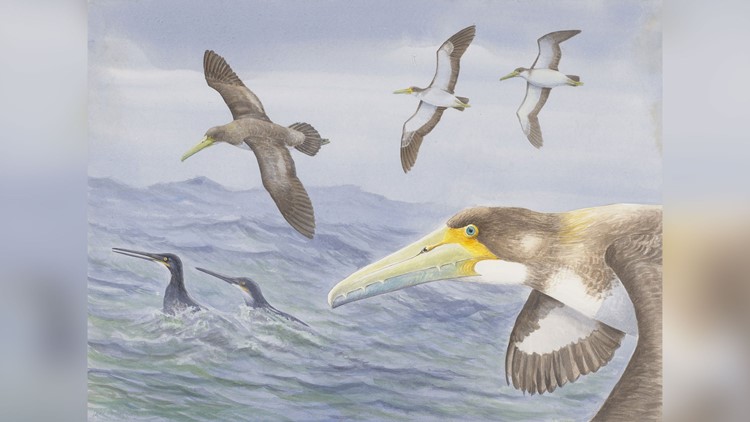Researchers have uncovered one of the most complete fossils of a bony-toothed bird that flew 62 million years ago over New Zealand.
The bird species lived soon after dinosaurs went extinct. And it was the ancestor to some of the largest flying birds that followed.
Researchers previously believed Pelagornithids evolved in the Northern Hemisphere, but this discovery of their ancestor — and the smallest in the family — in New Zealand shifts that view. In the past, fossils of these birds had been found only in the Northern Hemisphere.
A study about the fossil was published Tuesday in the journal Papers in Palaeontology.
The discovery came from the same team that discovered the fossil of the giant penguin this year at the same site.
The researchers named the new discovery Protodontopteryx ruthae in honor of amateur paleontologist Leigh Love’s wife, Ruth. Love offered it in gratitude since his wife has tolerated his passion for paleontology for decades, according to a release by the Canterbury Museum.
Bony teeth jutted on the outside of its beak. They helped the bird to catch fish.
This bird was about the size of a seagull, although its descendants would have wingspans larger than 16 feet. It likely flew for shorter ranges than its descendants, which could soar across oceans and evolved needle-like teeth on the inside of the beak for catching squid.
“Because ‘Protodontopteryx’ was less adapted to sustained soaring than other known pelagornithids, we can now say that pseudoteeth evolved before these birds became highly specialized gliders,” said Vanesa De Pietri, study author and Canterbury Museum curator.
New Zealand was vastly different 62 million years ago, supporting a tropical climate and seas of 77 degrees Fahrenheit where corals and giant turtles thrived.
The last of this family of bony-toothed birds died out 2.5 million years ago, before the evolution of modern humans.
Fossils discovered at the site, like Protodontopteryx and the giant penguin, will go on display soon at the Canterbury Museum in New Zealand.
In the meantime, the researchers are eager to learn more about Protodontopteryx from their fossil discovery. This fossil, which is well preserved and more complete than others, contains numerous unexpected features that will allow them to learn more about how the birds evolved.
“While this bird was relatively small, the impact of its discovery is hugely significant in our understanding of this family,” said Paul Scofield, study author and Canterbury Museum curator. “Until we found this skeleton, all the really old pelagornithids had been found in the Northern Hemisphere, so everyone thought they’d evolved up there.”



